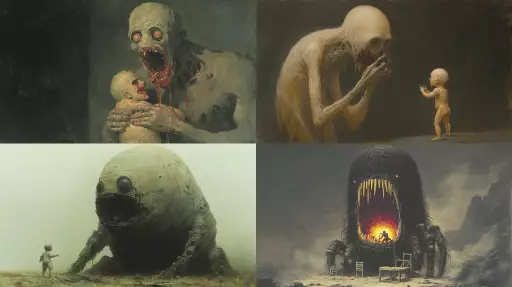Explore the Best AI Image Gallery

Beyond the Brushstroke: AI-Generated Media and the Future of Creativity
The landscape of creativity is undergoing a seismic shift as artificial intelligence (AI) enters the realm of media generation. From text to images, music to video, AI algorithms are now capable of producing content that was once thought to be exclusive to human imagination. This burgeoning field presents both exhilarating opportunities and complex ethical challenges, prompting us to re-examine the very definition of creativity in the digital age.
Potential Uses: Expanding Creative Horizons
AI-generated media has the potential to revolutionize various aspects of the creative industry:
- Art and Design: AI can assist artists in generating unique concepts, textures, and patterns, pushing the boundaries of traditional artistic expression. Imagine a world where AI tools empower anyone to create stunning visual art, regardless of their technical skills.
- Music Composition: AI algorithms can analyze existing musical compositions and generate new melodies, harmonies, and rhythms, opening up exciting possibilities for composers and musicians to explore innovative soundscapes.
- Film and Video Production: AI can be used to generate realistic special effects, create immersive virtual environments, and even automate aspects of video editing, streamlining the filmmaking process.
- Content Creation: AI-powered tools can assist writers in generating ideas, overcoming writers block, and even crafting compelling narratives across various mediums.
Ethical Considerations: Navigating Uncharted Territory
The rise of AI-generated media raises several ethical concerns that require careful consideration:
- Copyright and Ownership: Who owns the copyright to AI-generated content? Is it the creator of the algorithm, the user who provides input, or the AI itself?
- Bias and Representation: AI algorithms are trained on existing data, which can perpetuate biases and stereotypes present in society. Its crucial to ensure that AI-generated media reflects diversity and inclusivity.
- Authenticity and Deception: The ability to create highly realistic content raises concerns about the potential for misuse, such as generating fake news, propaganda, or deepfakes that can manipulate public opinion.
- Impact on Human Creativity: Will AI-generated media stifle human creativity or serve as a powerful tool to enhance it? Its important to strike a balance between leveraging AIs capabilities and preserving the unique value of human artistic expression.
Future Trends: Shaping the Creative Landscape
The field of AI-generated media is rapidly evolving, with several promising trends on the horizon:
- Increased Accessibility: AI tools will become more user-friendly and accessible to a wider range of individuals, democratizing creative processes.
- Personalized Content Creation: AI will enable the creation of highly personalized content tailored to individual preferences and needs.
- Immersive Experiences: AI-powered virtual and augmented reality applications will create immersive and interactive experiences that blur the lines between the physical and digital worlds.
- Collaboration Between Humans and AI: The future of creativity likely lies in a collaborative partnership between humans and AI, where each contributes their unique strengths to generate innovative outcomes.
Conclusion
AI-generated media is transforming the creative landscape, offering both unprecedented opportunities and complex challenges. By embracing ethical considerations, fostering collaboration, and nurturing human creativity, we can harness the power of AI to unlock new frontiers in artistic expression and shape a future where technology and imagination converge to create extraordinary possibilities.